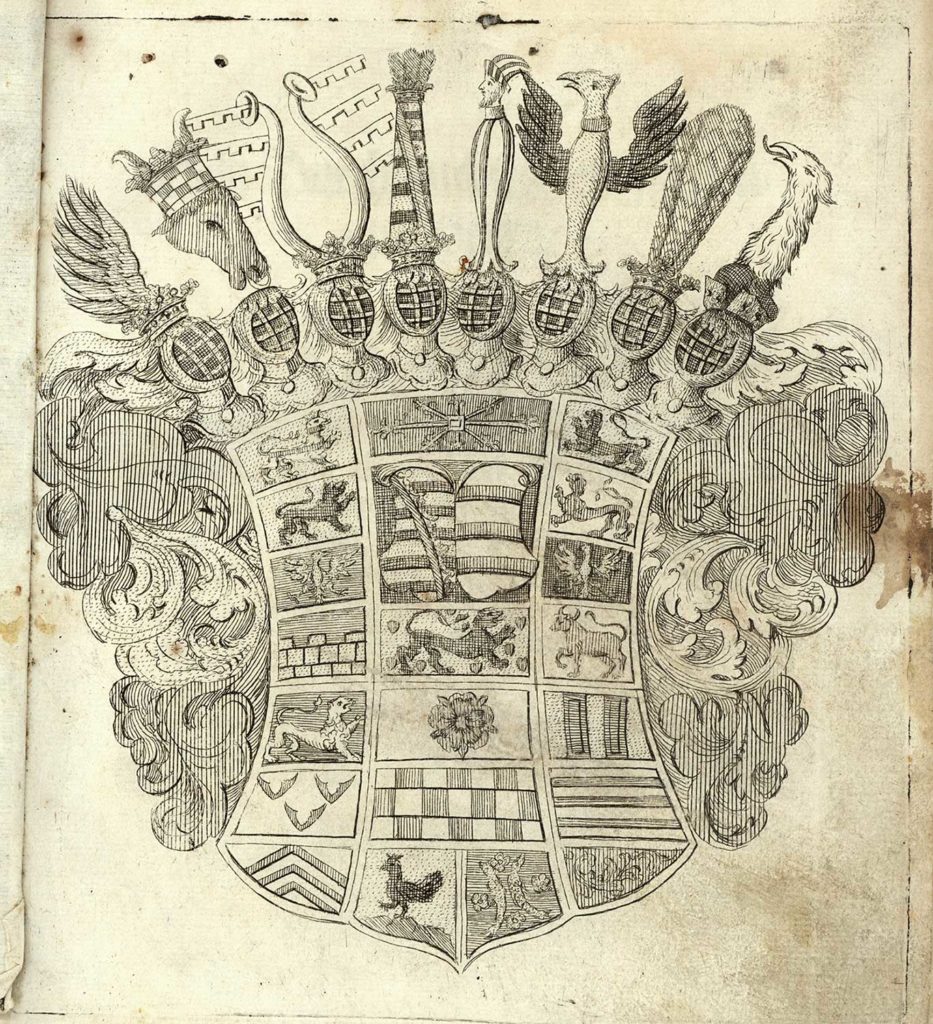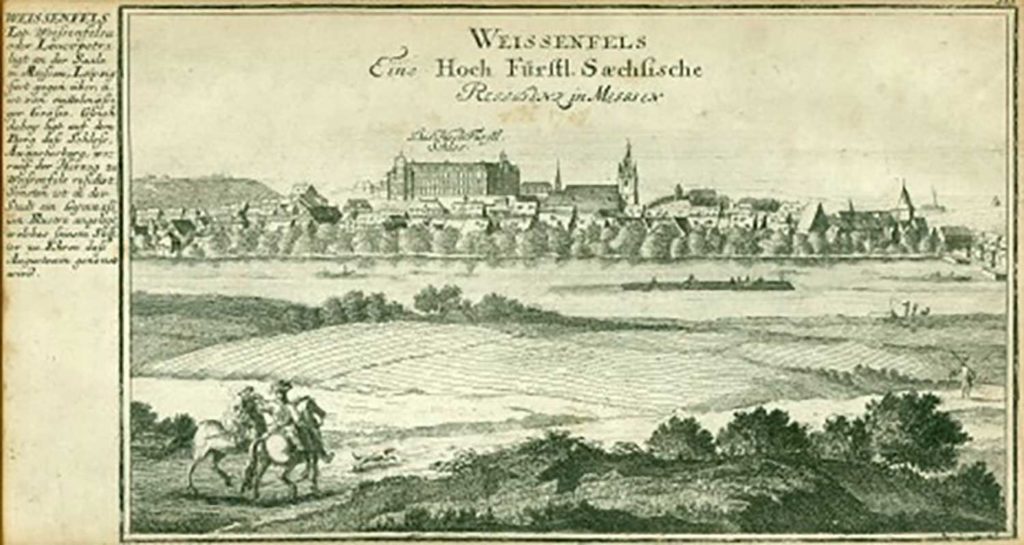The founder of the ruling family of Weissenfels family, Prince August of Saxony (1614–1680), was the second-born son of the Saxon Elector Johann Georg I and his wife Magdalena Sybilla, Electress of Brandenburg.
August’s life was determined by his assumption of the regency of the archbishopric of Magdeburg in his fourteenth year (1628), by the Thirty Years’ War, and by the division of the land that his father ordered in his will in 1652. His father died in 1656, and on 1 May 1657, four special dominions came into being. August’s elder brother, Johann Georg (1613–1680), became the new Elector and head of the family with a residence in Dresden. His three younger brothers August, Christian, and Moritz received parts of Electoral Saxon territory as well as the central German bishoprics. They founded the Electoral Saxon collateral (secondary) lines of Saxe-Weissenfels, Saxe-Merseburg, and Saxe-Zeitz. August resided in the archbishopric of Magdeburg in Halle (Saale) throughout his life. When he died in 1680, the archbishopric became extinct, and the area fell to Electoral Brandenburg. His successor therefore had to leave Halle and move into the newly founded residence in Weissenfels.
The duchy extended along the Saale and Unstrut Rivers and into northern Thuringia and had exclaves around Barby, Jüterbog, and Dahme. In 1663, a special imperial principality (Querfurt) was founded from parts of the Weissenfels territory. In addition to the residence in Weissenfels, important castles were those in Barby, Freyburg (Neuenburg), Sangerhausen, and Wendelstein. They were joined by the Heldrungen and Querfurt fortresses, the prince’s residences in Dahme and Weissensee, as well as the widow’s castle in Langensalza.
The princely families in Halle/Weissenfels, Merseburg, and Zeitz initially grew thanks to numerous descendants. The electors in Dresden, on the other hand, held back considerably with their offspring, probably out of fear of further divisions of the country. It was not until the 1720s that several princes again ensured the continued existence of the electoral family. At this time, the three collateral lines were already in decline due to the lack of male successors: in 1718 the House of Saxe-Zeitz became extinct, followed by Saxe-Merseburg in 1738. In 1746 Saxe-Weissenfels also died out. All possessions reverted to the Saxon Elector.
Although the three princely houses only existed for a relatively short time, their ruling families made enduring contributions to the cultural region of central Germany. Significant works of art, architecture, and intellectual history have preserved their cultural heritage to the present day. The estate of the Weissenfels dukes is largely dispersed. With just a few exceptions it is a treasure awaiting discovery.


